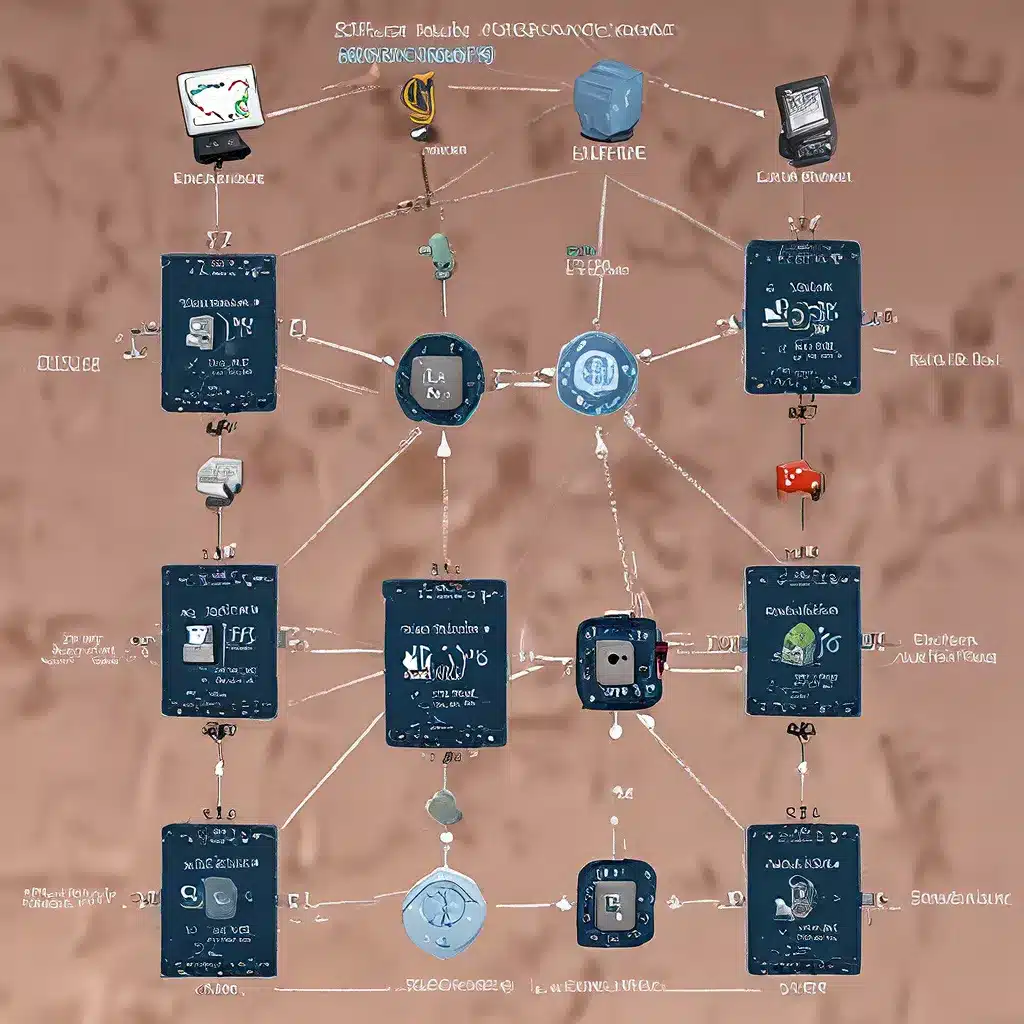
Navigating the Complexities of Sensor Network Design
As the Internet of Things (IoT) continues to proliferate across various industries, the need for robust, fault-tolerant sensor network infrastructures has become increasingly paramount. With the growing number of mission-critical IoT applications, ensuring the dependability and reliability of these systems is no longer a luxury, but a necessity.
One of the key challenges in sensor network design is the inherent vulnerability of these systems to faults and malicious attacks. Whether it’s a sensor node failure, communication link disruption, or a security breach, the consequences can be severe, leading to data loss, system downtime, and even potential threats to human safety or critical infrastructure.
To address these concerns, researchers and engineers have turned their attention to autonomous systems that can self-heal and self-protect IoT infrastructures. By imbuing sensor networks with the ability to dynamically detect, diagnose, and recover from various types of faults and attacks, these innovative approaches aim to automate the rectification of system issues and enhance the overall resilience of IoT deployments.
Autonomic Self-Healing in Sensor Networks
At the heart of this self-healing paradigm lies the concept of autonomic computing, which draws inspiration from the human autonomic nervous system. Just as our bodies can automatically regulate vital functions like heart rate and breathing without conscious effort, autonomic systems are designed to monitor, analyze, and adaptively respond to changing conditions in sensor networks, all without the need for constant human intervention.
This approach leverages a combination of diagnostic mechanisms, self-optimization algorithms, and automated recovery strategies to maintain the integrity and availability of sensor network components. By continuously assessing the health of individual nodes, analyzing network traffic patterns, and detecting anomalies, these systems can proactively identify and mitigate potential issues before they escalate into larger-scale failures.
One of the key advantages of autonomic self-healing is its ability to adapt to dynamic environments and evolving threats. As IoT deployments grow in complexity and scale, manual intervention and pre-defined response plans become increasingly impractical. Autonomic systems, on the other hand, can learn from past experiences, update their decision-making logic, and autonomously adjust their recovery actions to address new challenges as they arise.
Fault-Tolerance and Resilience in IoT Infrastructures
At the core of sensor network self-healing is the concept of fault-tolerance, which aims to ensure that the system can continue to operate correctly even in the presence of faults or failures. This is particularly crucial in IoT applications where sensor networks are often deployed in remote or harsh environments, where the risk of component malfunctions or environmental disruptions is heightened.
One approach to achieving fault-tolerance involves redundancy, where multiple sensor nodes or communication pathways are employed to provide backup options in the event of a failure. By implementing techniques like replication, distributed storage, and load balancing, sensor networks can maintain critical functionalities even when individual components experience issues.
Moreover, the integration of self-healing mechanisms into these fault-tolerant architectures further enhances the overall resilience of IoT infrastructures. Automated diagnosis and recovery processes can quickly detect and resolve faults, minimizing downtime and ensuring the continuous operation of mission-critical applications.
Securing IoT Sensor Networks
In addition to fault-tolerance, the security of IoT sensor networks is a crucial consideration. As these systems become increasingly interconnected and data-driven, they are also exposed to a growing array of cyber threats, ranging from malware and hacking attempts to unauthorized access and data breaches.
To address these security challenges, researchers have proposed secure IoT frameworks that incorporate end-to-end security measures, encryption, and access control** mechanisms. These frameworks aim to protect IoT devices, the data they generate, and the communication channels that connect them to the broader IoT ecosystem.
Moreover, the integration of self-protection capabilities within these security frameworks can further enhance the resilience of IoT sensor networks. Anomaly detection, intrusion prevention, and automatic response systems can help sensor networks detect, mitigate, and recover from security incidents in real-time, reducing the overall risk and impact of malicious attacks.
Energy-Efficient Sensor Network Design
Another critical aspect of sensor network design is energy management. IoT devices, particularly sensor nodes, often operate on limited power sources, such as batteries or energy-harvesting technologies. Ensuring the longevity and efficiency of these power-constrained systems is essential for maintaining the long-term viability and sustainability of IoT deployments.
Innovative approaches to energy-efficient sensor network design have emerged, focusing on duty-cycling, energy harvesting, and dynamic power management strategies. By optimizing the power consumption of individual nodes and the overall network, these techniques can extend the operational lifetime of IoT sensor deployments, reducing the need for manual maintenance or battery replacements.
Furthermore, the integration of self-optimization capabilities within these energy-efficient sensor networks can further enhance their effectiveness. Adaptive duty-cycling, intelligent load balancing, and dynamic resource allocation algorithms can help sensor networks autonomously adjust their power usage based on changing environmental conditions, sensor activity, and application requirements.
Conclusion: The Future of Sensor Network Self-Healing
As the Internet of Things continues to transform industries, the need for robust, fault-tolerant, and secure sensor network infrastructures has become increasingly critical. By embracing autonomic self-healing mechanisms, IoT deployments can enhance their dependability, adaptability, and resilience in the face of a rapidly evolving technological landscape.
The integration of fault-tolerance, security, and energy-efficiency within these self-healing sensor networks paves the way for a more reliable, sustainable, and secure IoT ecosystem. As the field of sensor network design continues to evolve, these innovative approaches will play a pivotal role in unlocking the full potential of IoT applications and smart technologies across a wide range of industries.
Explore the Sensor Networks website to discover more about the latest advancements in this dynamic and ever-evolving field.